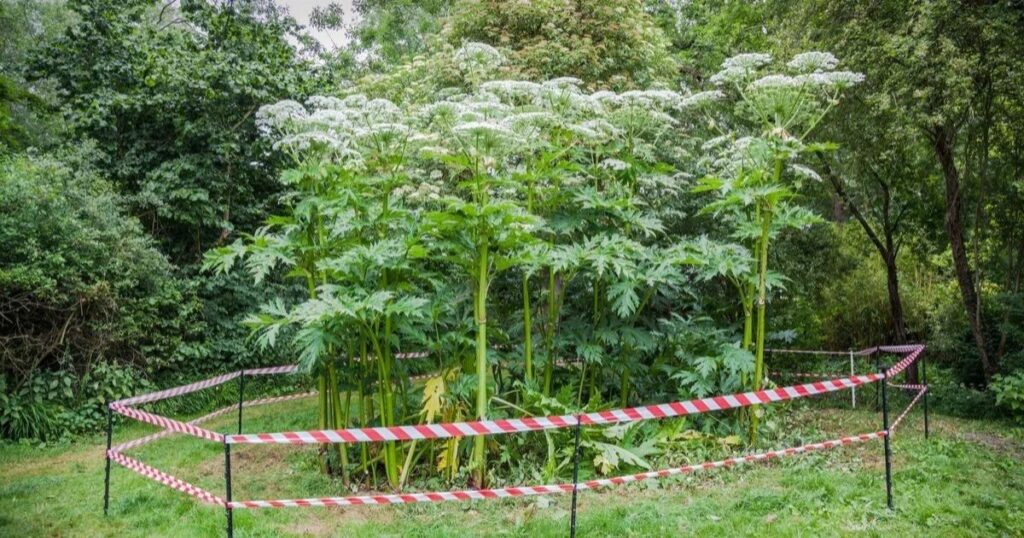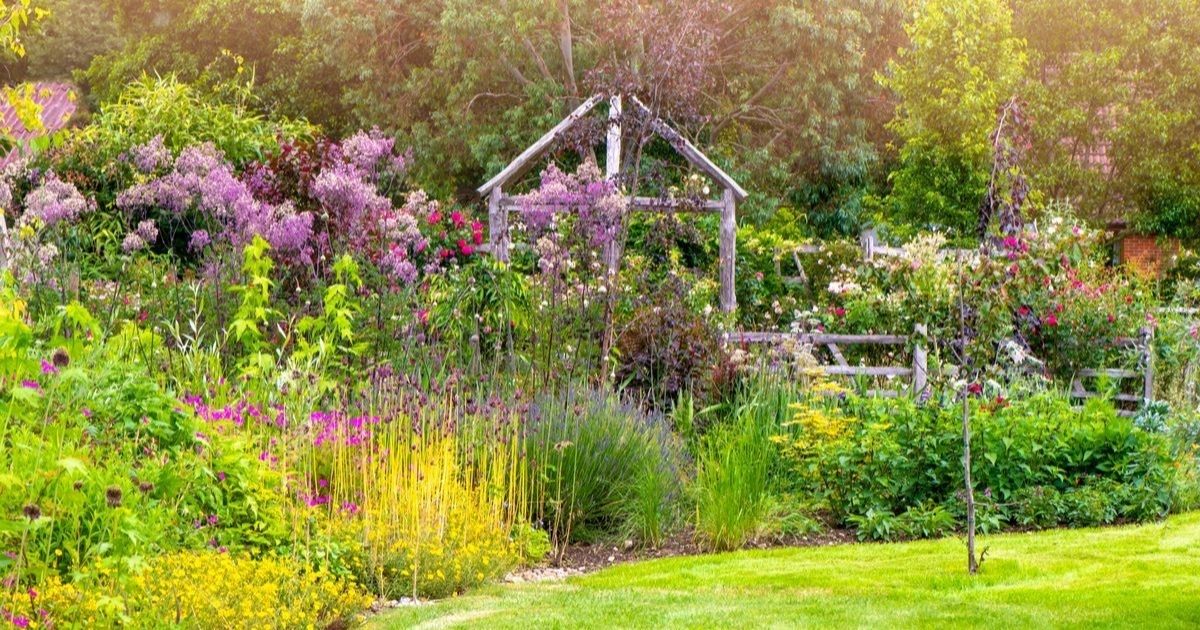As a gardener in the UK, it’s essential to be able to identify the most common garden weeds. Recognizing these pesky plants can help you take appropriate action to control them and maintain a healthy, vibrant garden. In this comprehensive guide, we’ll explore the 10 most prevalent UK garden weeds and three particularly dangerous ones that require special attention.
The ten most common UK garden weeds

Chickweed
Chickweed is one of the most ubiquitous garden weeds in the UK. These low-growing plants, reaching 5-7cm in height, are characterized by their small, white flowers. Chickweed is notorious for its prolific seed production, with a single plant capable of generating up to 15,000 seeds.
This weed thrives in damp soil, particularly during the spring and autumn months, making it a constant challenge for gardeners. To keep chickweed at bay, be vigilant and pull up the seedlings before they have a chance to establish themselves and spread further.
Fat Hen
Fat Hen is a common sight in vegetable gardens and compost heaps, as it favors rich, nutrient-dense soil. This weed can grow up to 27cm tall and has broad leaves and green-white flowers. To control Fat Hen, it’s essential to hoe or pull up the seedlings before they mature into larger plants. It’s important to note that Fat Hen seeds can remain dormant in the soil for up to 20 years, so continued monitoring and removal are crucial.
Groundsel
Groundsel is a weed that can grow quite tall, reaching up to 22cm. Its flowers resemble small dandelion heads, and a single plant can produce hundreds of wind-dispersed seeds. Groundsel thrives in dry, shaded areas, often appearing around parsnips, courgettes, and cabbages. Regularly hoeing and removing any remaining flower heads can help prevent Groundsel from taking over your garden.
Couch Grass
Also known as Twitch or Scutch Grass, Couch Grass is a deceptive weed that can quickly overtake borders and flower beds. While it may appear as a scruffy tuft of grass on the surface, its complex network of tough, underground roots can entangle and overwhelm nearby plants. To remove Couch Grass effectively, use a fork to gently lift the roots, ensuring you’ve extracted the entire system to prevent regrowth.
Goosegrass
Goosegrass, also called Sticky Weed or Cleavers, is a tall, messy-looking weed that can quickly spread through a flower bed. Its ability to cling to other plants and clothing makes it an effective seed disperser. Fortunately, Goosegrass is relatively easy to pull up by hand, though it’s recommended to wear gloves to avoid the sticky foliage.
Dandelions
Dandelions are a ubiquitous weed, particularly problematic in lawns. While leaving them for the bees until the yellow flower heads die off can be beneficial, it’s essential to remove the plants before they set seed. The most effective way to get rid of Dandelions is by hand-digging, ensuring you go deep enough to remove the entire taproot.
Hairy Bittercress
Hairy Bittercress is a diminutive weed, growing only 3-5cm tall, with tiny white flowers. Its small size and tendency to hide under larger plants make it easy to overlook. This weed thrives in cool, moist conditions and can often be found in containers. Hairy Bittercress has an explosive seed dispersal mechanism, launching its seeds up to a meter away, so diligent removal is crucial to prevent it from spreading throughout the garden.
Prickly Milk Thistle
Prickly Milk Thistle, also known as Sow Thistle, is a weed that should be identified and removed when it’s young, as its strong taproot becomes increasingly difficult to eradicate as it matures. This weed can reach up to 90cm in height and produces pale yellow flowers. Milk Thistle favors dry, shaded areas and can hide behind taller plants, so be sure to remove all the roots when dealing with this persistent weed.
Oxalis
Oxalis, also called Creeping Wood Sorrel, is a low-growing plant (5cm tall) with tiny yellow flowers and green or dark purple leaves. While it may appear quite attractive, Oxalis can quickly multiply and spread if left unchecked. Larger, less invasive varieties of Oxalis, known as Purple Shamrock, are sometimes sold as garden or houseplants.
Bugloss
Bugloss, also called Viper’s Bugloss and Green Alkanet, is an attractive weed with tiny blue flowers. However, it can multiply rapidly, with its seeds being easily dispersed by clothing or animal fur. Bugloss thrives in cool, damp conditions, such as around ponds, and has deep, persistent roots that must be dug out thoroughly to prevent regrowth.
Three dangerous weeds

Himalayan Balsam
Himalayan Balsam is an invasive weed that was introduced to the UK by the Victorians, who admired its ornamental appearance. This plant, however, is so aggressive that it’s now illegal to grow or even move soil containing its seeds. Himalayan Balsam can quickly overtake an area, eliminating all other plant life. If you encounter this weed, pull it up by the roots and burn it, as composting or placing it in a green waste bin is not recommended.
Japanese Knotweed
Japanese Knotweed is a highly destructive weed that can grow through buildings, foundations, cables, and piping, causing significant damage to property. It’s illegal to allow Japanese Knotweed to spread, and homeowners must declare its presence when selling a property. Due to the complexity of dealing with this weed, it’s best to leave the removal and disposal to professional contractors.
Also read this post:perennial weeds
Giant Hogweed

The sap of Giant Hogweed can cause severe burns by making the skin extremely sensitive to sunlight. If you come into contact with the sap, wash it off immediately, seek medical advice, and avoid sun exposure for several days. Originally introduced as a decorative plant in the 19th century, Giant Hogweed is now primarily found near riverbanks, as its seeds are dispersed by water. While weedkillers are generally not recommended, in the case of Giant Hogweed, professional treatment may be the safest option.
Accurately identifying and promptly addressing these common and dangerous weeds is crucial for maintaining a healthy, thriving garden in the UK. By staying vigilant and taking the appropriate measures, you can effectively manage these garden invaders and enjoy the beauty of your outdoor space.
FAQs
How do I identify weeds in my garden UK?
To identify weeds in your UK garden, look for plants that are growing aggressively, spreading rapidly, and crowding out your desired plants. Consult resources like this guide to learn about the characteristics of the 10 most common UK garden weeds.
What are the sticky weeds in my garden UK?
Goosegrass, also known as Sticky Weed or Cleavers, is a tall, messy-looking weed that can quickly spread through flower beds in UK gardens. This weed gets its name from the fact that its foliage is sticky and can cling to clothing, allowing the seeds to be easily dispersed.
Where do you find weeds?
Weeds can be found growing in a variety of locations in UK gardens, including vegetable patches, flower beds, lawns, and even in the cracks of paving stones. They often thrive in areas with rich, damp soil or in shaded, dry spots.
How many weeds are there?
This guide covers the 10 most common UK garden weeds, but there are many more species that can potentially invade gardens. In fact, there are thousands of different weed species found throughout the UK, each with its own unique characteristics and growth habits.











